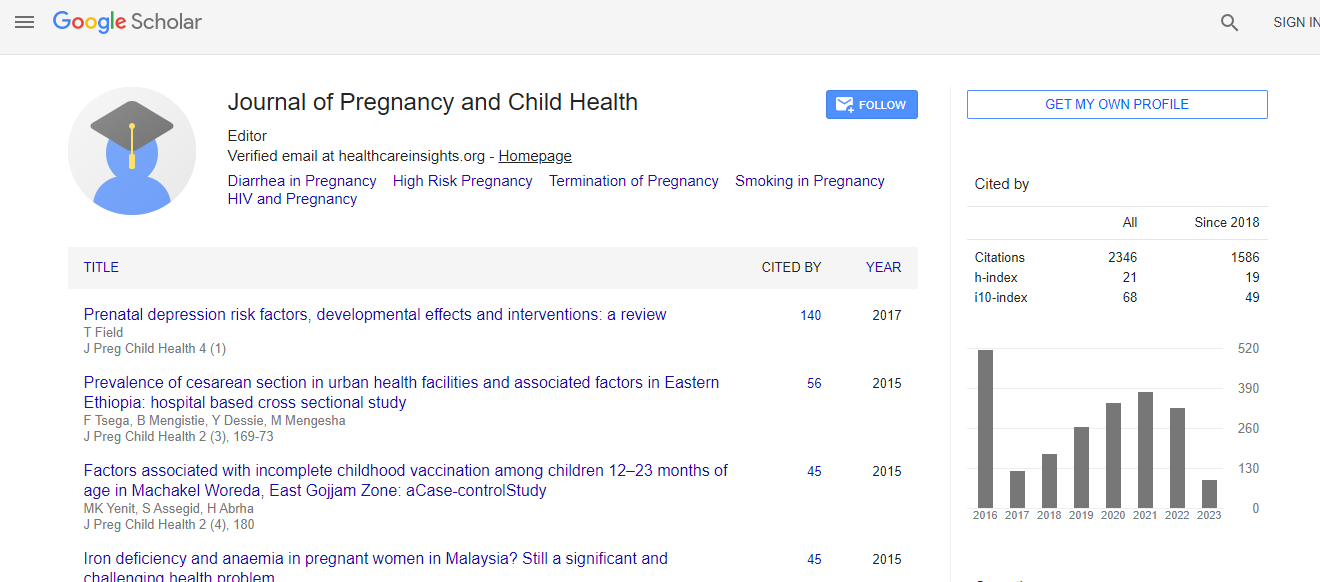Research Article
Delivery in the Time of War: A Study of Births at the Principal Maternity Ward in Benghazi from 2002 - 2013
| Zuhir Bodalal1*, Khalil Agnaeber2 and Monsef Gnaiber2 | |
| 1Faculty of Medicine, Libyan International Medical University, Benghazi, Libya | |
| 2Maternity Ward, Al-Jamhouria Hospital, Benghazi, Libya | |
| Corresponding Author : | Zuhir Bodalal Faculty of Medicine Libyan International Medical University Benghazi, Libya Tel: 218 91 478 9141 Fax: 218 61 2233909 E-mail: zuhir.bodalal@limu.edu.ly |
| Received: August 13, 2014; Accepted: December 05, 2014; Published: December 08, 2014 | |
| Citation: Bodalal Z, Agnaeber K, Gnaiber M (2015) Delivery in the Time of War: A Study of Births at the Principal Maternity Ward in Benghazi from 2002 - 2013. J Preg Child Health 2:124. doi: 10.4172/2376-127X.1000124 | |
| Copyright: © 2015 Bodalal Z, et al. This is an open-access article distributed under the terms of the Creative Commons Attribution License, which permits unrestricted use, distribution, and reproduction in any medium, provided the original author and source are credited. | |
Abstract
Background: Al-Jamhouria is the principal maternity hospital in eastern Libya, serving a population approaching two million people. In 2011, armed conflict broke out in Libya which was followed by subsequent civil unrest – placing a heavy strain on the healthcare service. This study aims at performing an observational analysis on the trends of delivery for over a decade while also taking civil unrest into consideration.
Methods: Patient records were gathered retrospectively from the maternity ward for the twelve-year period between 2002 and 2013. The overall number of births and method of delivery were analyzed.
Results: Al-Jamhouria hospital delivered nearly a quarter million deliveries (n=228,598) in slightly over a decade. The majority of deliveries were unassisted vaginal (74%, n=169,199), although as a trend the rate was decreasing. Cesarean sections have more than doubled in the last twelve years with particular increases during the conflict period (in favour of other methods). Intrauterine death rates have been fairly constant in the studied period. Since the start of armed conflict, the number of deliveries at Al-Jamhouria hospital has been declining (for the first time in its recorded history).
Conclusion: Al-Jamhouria hospital has continued to provide healthcare services to pregnant women en masse in eastern Libya – in spite of a myriad of hindrances and a decreasing patient load. Cesarean sections have become more commonplace and their rate has doubled in the last twelve years. The private sector may have potentially helped to relieve the heavy burden on this sole maternity ward. Further studies are needed to determine the short term and long term impact on the health of the population.

 Spanish
Spanish  Chinese
Chinese  Russian
Russian  German
German  French
French  Japanese
Japanese  Portuguese
Portuguese  Hindi
Hindi 
